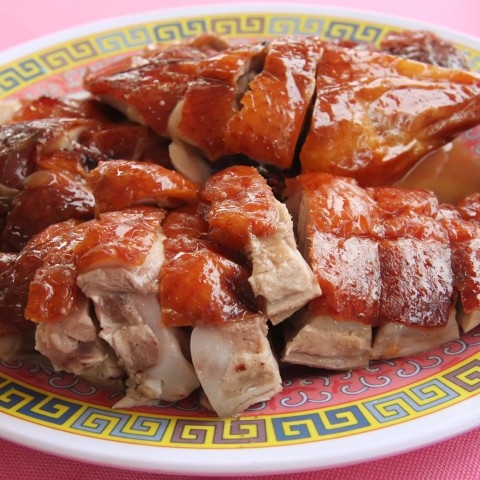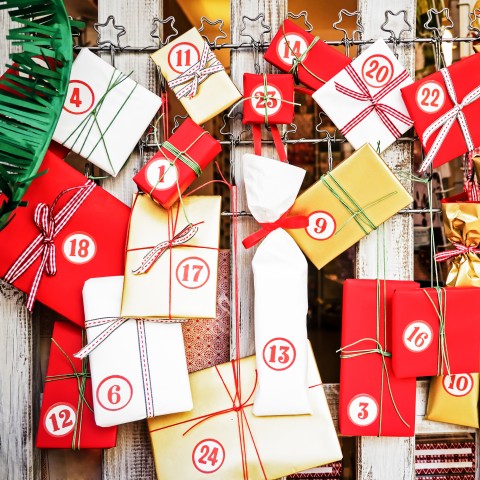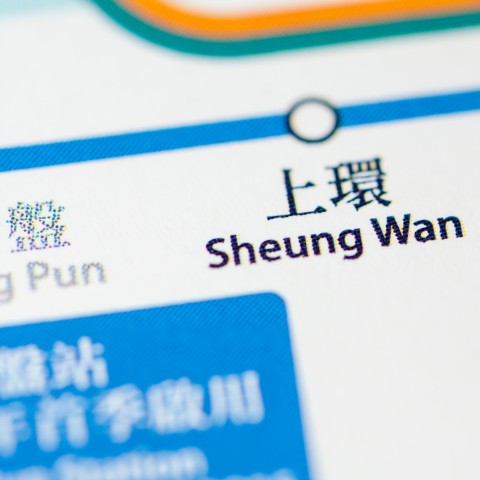Some say manners and etiquette are outdated and no longer matter in this day and age—why bother to care about how others think or feel? Why don’t we just “be our true self” and “show our personality?”
However, decent manners and etiquette are never out of style. They’re the cornerstone of civilization. Without them, a society will become disorganized; its members will demonstrate disrespect for one another and ultimately lead to chaos, insults, falsehoods, and many more unpleasant consequences.
That’s why we’ve set out to help you learn Cantonese customs and etiquette in Hong Kong for your time here.
Table of Contents
- Why Manners and Etiquette Matter to You
- Concepts Related to Manners in Hong Kong
- Dining Etiquette in Hong Kong
- Gift Giving Etiquette in Hong Kong
- Do’s and Don’ts – Transportation in Hong Kong
- Bonus: How to Greet in Hong Kong
- Conclusion: How CantoneseClass101 Can Help You Learn More Cantonese
1. Why Manners and Etiquette Matter to You
Manners Maketh Man.
Manners tell who you truly are and represent your inner self, while etiquette sets out a guideline on how you’re expected to behave in public. They touch on every aspect of our lives.
Things like saying 多謝 (do1 ze6) or “thank you” when someone offers help, greeting a colleague with 早晨 (zou2 san4) or “good morning,” and offering your seat to the elderly show that you care about and respect others.
Understanding the social etiquette in Hong Kong will come in handy when you’re making a new friend or interacting with the locals. By demonstrating your respect and avoiding behaviors that are deemed “offensive,” your relationships with them will be more sound and smooth.
2. Concepts Related to Manners in Hong Kong
1- 面 (min2)
面 (min2) is a unique concept in Chinese society. This concept of cultural etiquette in Hong Kong describes one’s status, dignity, and integrity. You can also refer to 面 (min2) as the feeling of being respected and honored by others.
This is a crucial concept in Hong Kong society. Further, a similar concept that will help you foster your relationships with the locals is 畀面 (bei2 min2), meaning:
- The ability to hold back when criticizing someone to make that person feel respected.
- Taking actions to demonstrate your admiration and regard for that person.
面 (min2) is closely tied to a number of unique concepts governing the culture of Hong Kong and Chinese communities:
- 關係 (gwaan1 hai6) meaning “relationship.”
- 中庸 (zung1 jung4) which is a prevailing mindset from Confucianism of not going for the extremes, both in terms of praise and criticism.
- 人情 (jan4 cing4) which is a sense of human touch and affection/owing someone a favor. Feel free to click the above links if you want to know more.
2- Respect for Seniors
According to Hong Kong social etiquette, age usually determines seniority. In family settings, it’s expected that everyone will respect the elder ones in accordance with filial piety, a deeply rooted virtue in many Southeast Asian countries. HongKongers usually worship their ancestors at least twice a year, which stems from the belief that children are indebted to their parents forever.
3. Dining Etiquette in Hong Kong
If you’re going to dine at a traditional Chinese restaurant in Hong Kong, tables will typically be large and round to accommodate a group of friends or family. Most dishes are shared instead of à la carte, and they’re placed in the center of the table where everyone gets to take a portion of the dishes.
General Food Manners & Restaurant Etiquette in Hong Kong
- DON’T put your hand below or above someone else’s hand while taking the food from a serving plate.
DO wait until the other person finishes grabbing his or her food before you start taking yours. - DON’T take food from the serving plates and put it into your mouth directly.
DO put it into your bowl first before you eat. - If you like only a part of the dish, DON’T look for your favorite part on the serving plate.
DO this only while it’s in your bowl. - DO leave bits of food on your plate to show that you were satisfied.
DON’T leave your plate empty, because the host may think you didn’t have enough food. - DON’T spin your table counterclockwise; always spin it clockwise.
Chopsticks
- DON’T point at someone or something with your chopsticks.
- DON’T use your own chopsticks to grab food from the serving plate.
DO use “public chopsticks” (chopsticks that are placed at the center of the table for grabbing the food). - DO place your chopsticks on the rest provided if you’re not using them.
- DON’T shake your chopsticks if they’re wet from soup.
- DON’T place your chopsticks across each other.
- DON’T put your chopsticks in your rice bowl in an upright position; this is only done at funerals.
Tea
- DO open the lid of the teapot or place the lid upside-down if you would like to request more tea.
- DO tap your fingers several times by your cup to thank a person for pouring tea for you.
- DON’T take the first sip; wait for the senior host to do so first.
4. Gift Giving Etiquette in Hong Kong
If you’re invited to someone’s house in Hong Kong, you’re expected to bring a gift with you. Check out the guidelines below:
- DON’T present four gifts, as “four” sounds similar to “death” in Cantonese. If you would like to bring multiple gifts with you, try three (similar to “life” in Cantonese), eight (similar to “prosperity” in Cantonese) or nine (similar to “eternity” in Cantonese).
- DO make sure you hand your gift over with both hands.
- DO insist on handing over the gift. Sometimes the host may refuse the gift a couple of times before accepting it. This is part of the traditional Hong Kong culture.
- DON’T wrap your gift in white or black, as they’re considered unlucky colors.
DO try lucky colors like red or gold instead. - DON’T unwrap the gift on the spot.
- DON’T pick clocks or watches as gifts. “Giving a clock” in Cantonese sounds like attending a funeral.
- DON’T pick shoes as gifts, as the Cantonese word for “shoes” sounds like “rough,” which suggests bad luck.
5. Do’s and Don’ts – Transportation in Hong Kong
General Manners on Public Transportation (Bus, MTR, etc.)
- DO keep quiet and be considerate. Avoid obstructive behavior and public displays of affection.
- DON’T eat, drink, or smoke on public transportation.
- DO give up your seat to the elderly, pregnant women, the disabled, and families with babies.
- DON’T litter.
- DON’T take up more than one seat.
MTR: Hong Kong’s Railway System
- DO have your Octopus card or ticket ready before you go through the gate in the MTR station. MTR is one of the busiest train systems in the world. Trains come in every minute during rush hour and take on around 4.6-million passengers every day. If you only search for your ticket or card at the gate, you’ll definitely feel the pressure from other impatient commuters.
- DO stand on the right side of the escalator to allow other commuters to walk on the left.
- DO let passengers get off before entering the MTR carriage.
- DON’T lean up against the poles, as other passengers will need to hold onto the poles.
- Even if you’re yet to arrive at your destination, DO let people out when you’re at a stop and DON’T stand at the doorway.
- DO pull your legs in to avoid tripping other commuters.
- DO move inside the train compartment.
6. Bonus: How to Greet in Hong Kong
When it comes to social etiquette in Hong Kong, there aren’t many special gestures (such as bowing) for when you greet someone in Hong Kong. Simply saying Cantonese greeting words will do:
- Cantonese character: 你好
- Romanization: nei5 hou2
- Meaning: “Hello” (formal)
- Cantonese character: 哈囉
- Romanization: haa1 lo3
- Meaning: “Hello” (informal)
If you would like to express your enthusiasm in meeting someone, you can wave your hands while saying hello to him or her. Avoid hugging, bowing, or kissing on the cheek.
To know more about how to appropriately greet someone in Hong Kong, check out our article on How to Say Hello in Cantonese!
7. Conclusion: How CantoneseClass101 Can Help You Learn More Cantonese
Want to level up your Cantonese and learn more Cantonese phrases? No worries. With CantoneseClass101.com, you can have your daily dose of Cantonese whenever and wherever you want, through mobile apps, desktop software, and our website. We offer entertaining, engaging, and effective lessons on various aspects of the Cantonese language and culture.
Until now, we’ve delivered more than 750,000,000 lessons to thousands of happy students from all around the globe. You can learn Cantonese with over 1060 audio and video lessons delivered by our knowledgeable and energetic hosts, detailed PDF lesson notes, an abundance of vocabulary learning tools, spaced repetition flashcards, and a lively community to discuss the lessons with fellow learners. What are you waiting for? Download our lessons, enjoy our audio and video files, and start learning now!
And keep in mind that if you prefer a one-on-one learning approach and want to further accelerate your Cantonese learning, you can take advantage of our MyTeacher program!
Before you go, let us know in the comments if you learned anything new about etiquette in Hong Kong. Are etiquette rules here similar or very different than those in your country? We look forward to hearing from you!


















